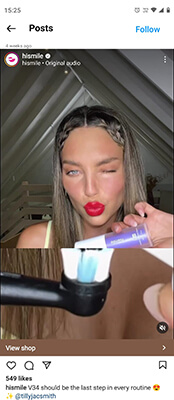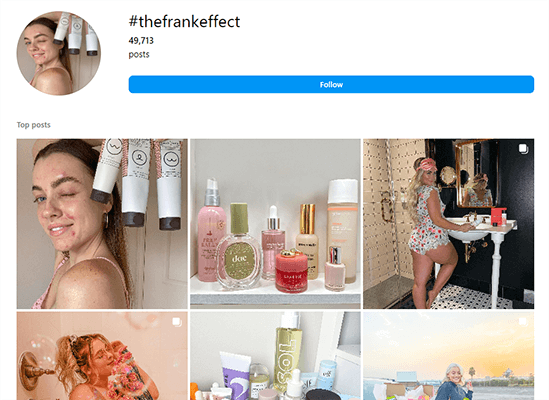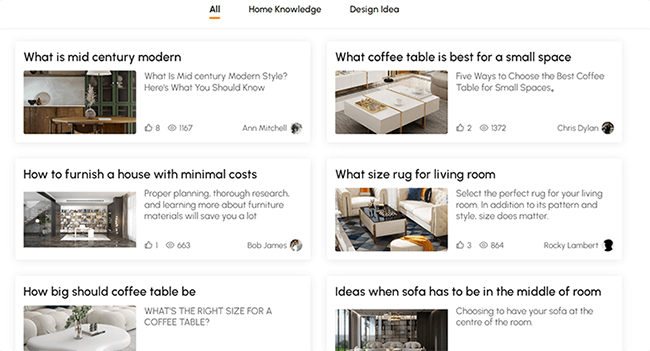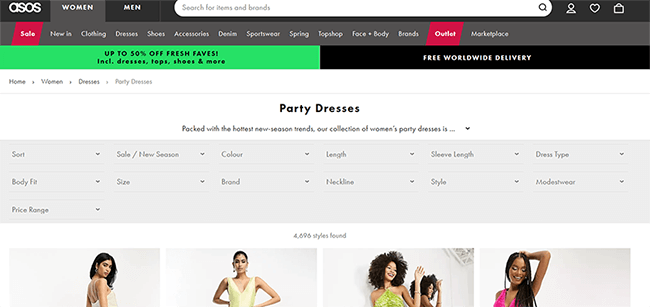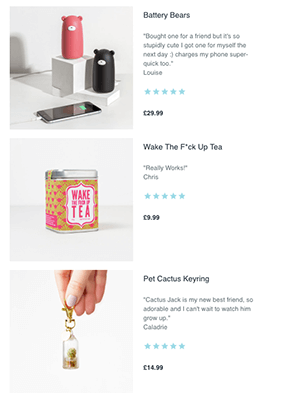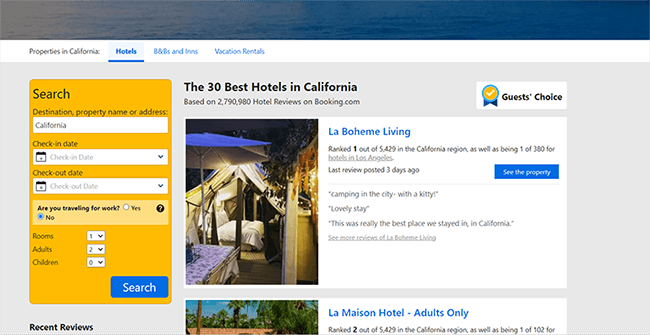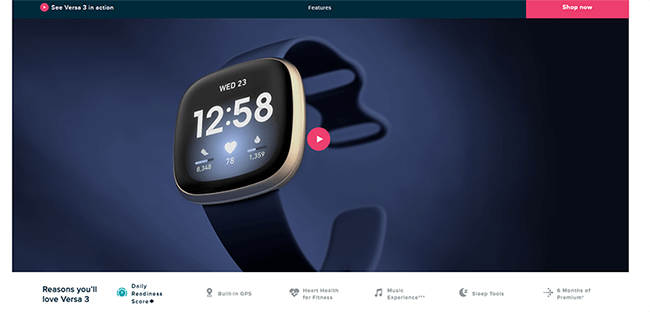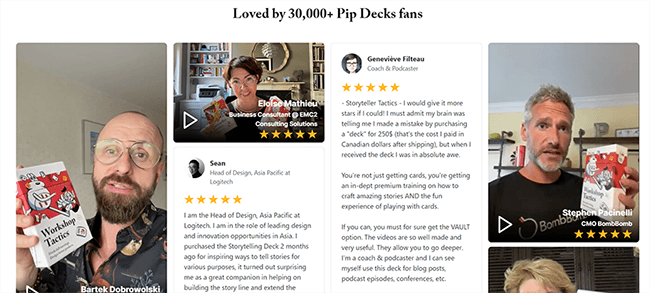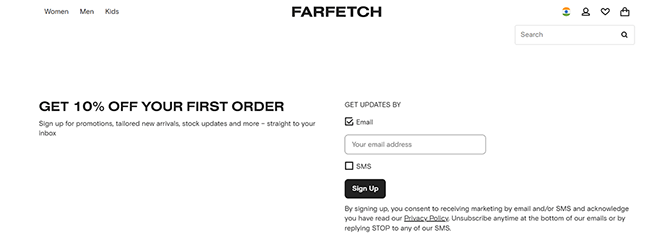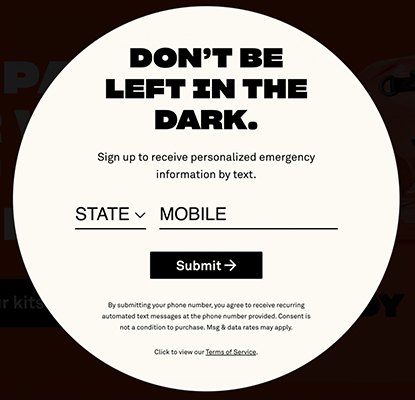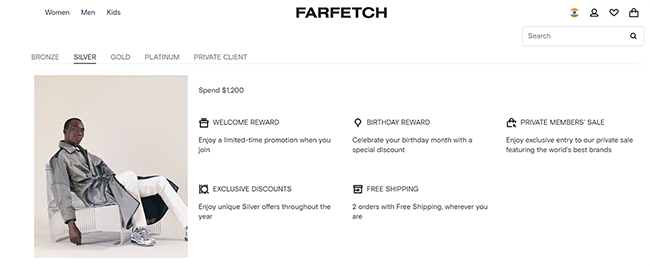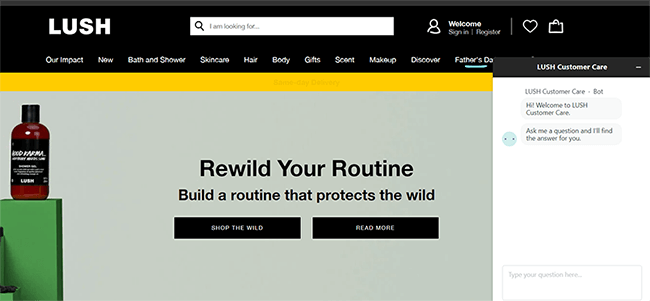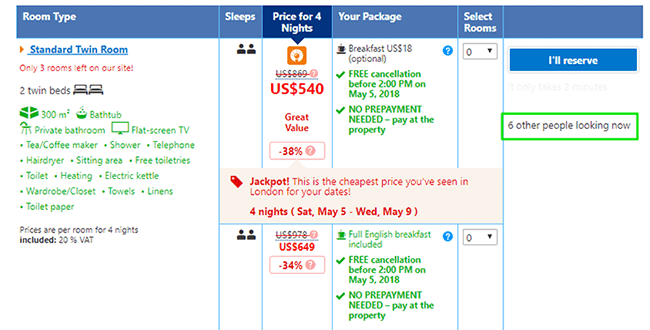23 Top Ecommerce Marketing Strategies For 2024

Ecommerce stores have a unique problem: unlike retail stores in a mall, you don’t have a storefront that automatically attracts buyers. So, you need to go the extra mile to apply different ecommerce marketing strategies to get your brand out there.
The good news is, it’s not as difficult as it sounds. With the right practices in place, you can not only generate inbound sales but also build a brand name and create brand loyalty.
But the right strategies matter. In this cut-throat competition, you can’t spend hours on the strategies that aren’t moving the needle.
So, we compiled the best marketing strategies you can use to take your ecommerce store to the next level, without wasting any time. You’ll find brand examples to see how you can implement them in real life by yourself.
Here are 23 actionable ecommerce marketing strategies you can use.
1. Use live shopping
Live shopping is similar to the home shopping channels on television. The only difference is, instead of TV, consumers now shop for products on a mobile phone via a real-time video broadcast on platforms like Instagram, YouTube, and Taobao.
While still in its early stages, live shopping could account for up to 20% of ecommerce sales by 2026 according to a McKinsey report.
To get the most out of it, you can pair up your influencer marketing initiatives with live shopping. For example, you could have a fashion influencer endorse your apparel products on a live broadcast along with some recommended styling tips. This will also help you get the initial traction on your live videos.
CAIA Cosmetics recorded a conversion rate of 5% on their first-ever live stream, which is higher than the brand’s average website conversions.
2. Create gift guides
Birthdays, anniversaries, special days like Mother’s Day, holidays; you name it, and there’s gifting potential for events all year round.
But that’s not all – you also earn more per sale when selling gifts. Gift buyers spend more per shopping trip, engage in more cross-buying, and show a higher purchase frequency.
But there’s a caveat: buyers are often confused about what to gift. To capitalize on this buyer behavior, you need to apply a successful ecommerce marketing strategy. Start by creating gift guides that feature products that help your target audience narrow their gifting options. This way, you’re not pushing your products, but rather positioning your products as the solution to an existing problem.
While many ecommerce brands use this strategy for popular festivals like Christmas and New Year, you can help people make meaningful purchases by including gift guides for occasions like “gift guides for anniversaries” or “celebrating someone’s first job.”
Here’s how Tarte put up a short quiz on their website to suggest the perfect gifting options for its consumers.
This quiz had just 5 questions asking the visitor about the budget and other details about the recipient, making it easy and quick to fill in.
Basic quizzes can be done with some sort of form builder but for anything more in-depth, check out our article on quiz maker tools.
3. Launch social media contests
62% of participants who engage in a social media contest share it with a friend to encourage them to participate.
This is no big feat considering that people love to engage in activities where they can display their skills or talent and get something in return.
This also allows you to showcase your brand to a wider audience and generate buzz around your contest.
There are many ways you can run these online contests. For example, you could run event-based contests like Halloween contests, voting or poll-based contests, quizzes or trivia about your niche, and host giveaways.
Here’s one example from Lands’ End to get you inspired.

The best contests will always be the ones that evoke the creative sides of your audience and gives them a chance to portray their talents.
If you decide to use this ecommerce marketing strategy, use these contest tools to help conduct and manage these contests effectively.
4. Optimize your store for mobile
Mobile commerce is growing rapidly because of the convenience that today’s ecommerce stores offer consumers. In 2022, mobile ecommerce spending in the United States surpassed 387 billion USD – more than double the spending in 2019, before the pandemic.
In such a scenario, optimizing your store or website for mobile is a crucial ecommerce marketing strategy.
This means helping the users add products to the cart on their mobile phones without needing to zoom in, presenting product images that load fast, and placing dropdown arrows on product pages so that too much information doesn’t make the experience cluttered.
For example, see how clearly everything is visible, especially the main elements like Cart, Inspiration, and Account options in IKEA.
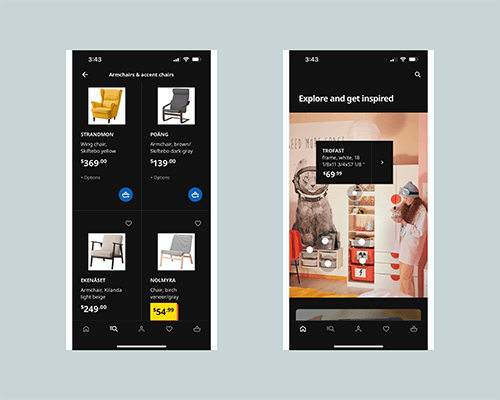
5. Integrate social commerce
As the time spent on social media has grown, social media platforms like Instagram, Facebook, and Snapchat have started integrating social selling features to assist brands in creating shoppable content to increase conversions.
Statistics show that social commerce will only increase in the years to come.

Instead of targeting all marketing channels simultaneously, start with the platform where your audience is the most active. Learn about the best practices of each platform and create content that attracts your audience.
Here’s how Hi Smile showcases UGC content along with the link to their Instagram shop, where users can click and buy the product featured in the reel.
You can even use native analytics for each platform and see which kind of content is garnering the most attention and then use it to create shoppable posts.
6. Leverage UGC
When potential customers see people buying your products and liking them, they feel more confident about purchasing those same products from your store. That’s why user-generated Content (UGC) is so effective.
Frank Body has made the best use of this ecommerce marketing strategy by creating a unique hashtag #thefrankeffect for UGC posts. They also started offering their fans who came up with unique posts exciting monthly prizes.
Look at how they promote their hashtag in their Instagram bio.

The hashtag now has close to 50,000 posts that the brand can use (after getting permission from the creator).
7. Create helpful how-to guides
People love reading helpful content and finding product recommendations that solve their problems. Take this scenario as an example:
Someone is searching for solutions to their tanning problem.
Option A: They get products recommended to them via your ecommerce store
Option B: They see an article by your brand on “How to remove tan in 6 simple steps” While they read this article, they also get product recommendations from your store.
If the how-to guide is top-notch, you’ll see a lot of product purchases from that.
For example, Homary, an online furniture store’s blog, has a great collection of educational and engaging articles that attract and convert readers.
8. Use interactive site search
Site search helps users find the exact products they want to purchase by entering matching keywords. What’s more, shoppers who use the search feature are twice as likely to convert.
The reason: these shoppers are often ready to buy and have a high purchasing intent.
Here are some site search best practices for ecommerce stores:
1. Make the search box clearly visible and place it where people are accustomed to finding it.
2. Allow for errors and autocorrect. For example, if someone types “erphones” instead of “earphones,” your search should be optimized to recognize this typing error and send the user to the relevant page.
3. Provide filters to let users search by attributes like size, color, and occasion.
9. Get creative with product recommendations
Product recommendations are one of the best ecommerce marketing strategies to create upselling and cross-selling initiatives. In fact, 49% of consumers have purchased a product they did not initially intend to buy – because of personalized recommendations.
You can use product recommendation apps like Wiser and Product Recommendation Quiz to get creative with your recommendations.
Atkin and Thyme, an online furniture store, has a great way to showcase product recommendations. For every product you choose on their website, you’ll get a “Complete The Look” section below with other cross-selling options.
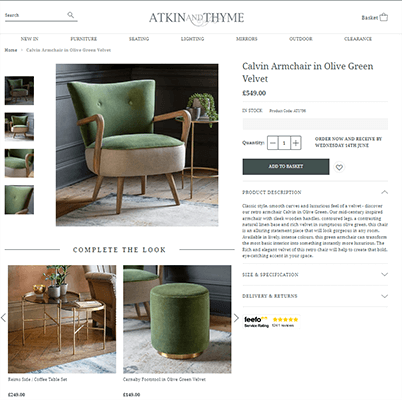
This can help people looking to re-design their rooms by getting similar products to match the look and feel of their rooms.
Below this section, the store also recommends similar products to the ones you searched for, so you have plenty of options.
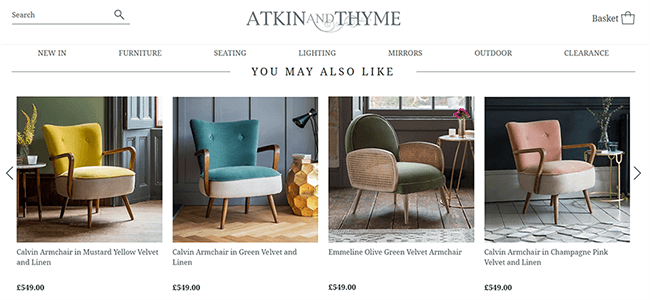
10. Focus on retargeting email campaigns
If you’re not trying to win back customers who showed a high intent to purchase by adding items to the cart or putting them on their wishlists, you’re losing out on a lot of revenue.
This ecommerce marketing strategy can help your leads return to your store and complete their purchases.
There are two ways to conduct retargeting: by using retargeting ads or running creative retargeting email campaigns.
Look at how Adidas framed this email retargeting campaign.
What can you learn from this email?
- Nail your heading and introduction. The heading of this email immediately draws you in and compels you to read through the entire introduction
- Prominently display your CTAs. The CTA of “Shop now” and “Customize” is clearly visible in the email.
- Add social proof. The testimonials for the same shoes make the customer more inclined to purchase.
11. Use testimonials and reviews in your campaigns
There’s a difference between you telling your audience how good your products are vs. your existing customers telling others that they love your products.
Using testimonials and reviews as a part of your ecommerce marketing strategies gives the customers the nudge they need to overcome their objections and purchase your products.
Most ecommerce brands use these reviews and testimonials on their homepage, landing pages, and product pages. But only a few incorporate them in their email marketing campaigns.
Here’s how Firebox uses testimonials as product descriptions in emails instead of writing lengthy paragraphs. After all, who can better describe a product than a customer who loves using it?
You can even incentivize people with discount coupons or credits to share their reviews if you’ve just started your ecommerce store and have no social proof to show.
12. Launch Google shopping campaigns
Also known as Product Listing Ads or PLAs, Google shopping ads appear right on top of the search results whenever someone types a product phrase like “organic tea.”
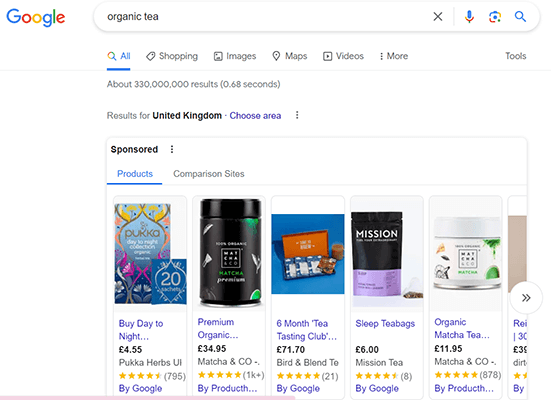
Your product also appears in other places like search partner websites, the shopping tab, price comparison services, Google Display Network, and YouTube.
Even though you can get a good chunk of traffic from free listings on Google’s Shopping tab, the most prominent positions go to paid listings.
To use Google Shopping, you’ll need to:
- Create a Google Merchant Center Account
- Link your Google Adwords Account
- Optimize your product pages
- Start working with a campaign
To succeed with your Google campaigns, access clear reporting data that helps you analyze and optimize your campaigns.
13. Test programmatic SEO
Programmatic Search Engine Optimization is the method where hundreds or thousands of pages are created to address simple, repeatable key phrases on Google. These keywords are generally long-tailed and not that competitive.
Let’s take an example to understand this better.
Assume you’re searching for a hotel to stay in California. The search leads you to Booking.com’s results.

When you click on this link, you’re taken to a landing page specially created for searching hotels in California.
Booking.com can create a series of landing pages by targeting the following keyword pairs or phrases:
[Primary Modifier] [Keyword Phrase] [Name of Place, City, Country]
Examples:
- Top Hotels in Chicago
- Best hotels in Bali
- Cheapest Airbnbs in Las Vegas
You can follow the same process for your store. To create these landing pages at scale, you can add content dynamically to the initially created templated landing pages via apps, plugins, or code.
14. Use video marketing
With the advent of shorter video formats like reels and stories, people are increasingly being drawn toward engaging video content. A recent study revealed that 91% of people want brands to create and share more online video content.
The reasons are simple: they are easy to consume, more effective at telling a story, showing emotions, and humanizing your brand.
Here are three ways to create video campaigns for your ecommerce business:
Provide detailed product features and functionalities
For example, if you’re selling premium fitness watches, you might want to showcase a detailed video discussing everything a person can do with your watch.
Use product tutorials
Many cosmetics brands now have videos on their product pages showing how customers can create different looks using their products.
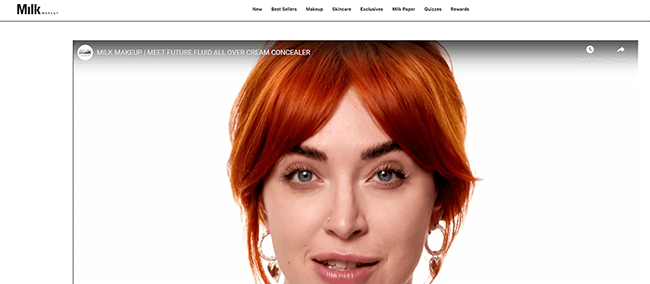
Share video testimonials
From your customers on your homepage or important landing pages.
15. Leverage the power of social media
77% of consumers prefer shopping with brands they follow on social media over others.
The reason is clear – the stronger your presence on social media, the more people trust your brand and prefer buying your products.
As an ecommerce brand, you need to be active on platforms that promote visual content, like Instagram, Pinterest, and TikTok to show your products in action.
In fact, Pinterest recently reported that shopping engagement grew by about 20% on the platform.
Here’s how CeraVe, a skincare brand, uses Pinterest to reach people looking to improve their skincare routines.
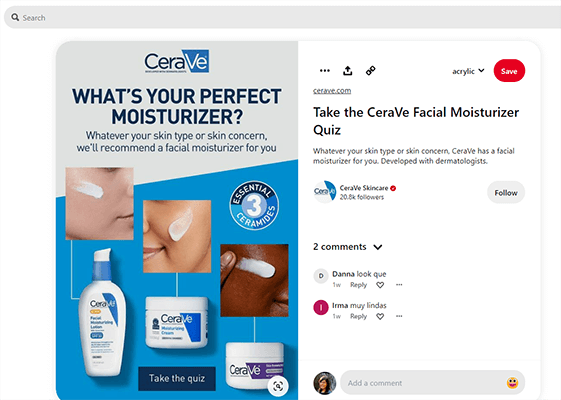
After their campaign ended, they saw a 2X increase in organic searches.
Another benefit of being active on social media is that you can instantly gauge your audience’s reaction to different types of content. For example, you can invest more in your video marketing strategies if people prefer video content over pictorial content.
You can use social media to interact with your audience and gain zero-party data, which you can use to optimize your products or services. For example, if you’re planning to launch a new product, you can take instant feedback from your audience before you even go into production.
Create your social media strategy with this in-depth guide.
16. Expand your email list
Ecommerce brands have different email campaigns running at the same time, from welcome emails to retargeting emails.
To get the most out of these campaigns, you need to capture more email subscribers
Here are four ways to do that:
1. Offer a discount in exchange for signing up. This way, you can incentivize new subscribers and even increase sales.
2. Actively promote your newsletter or email capture efforts on social media.
3. Create an exciting piece of content/quiz to offer via email.
4. Run giveaways and contests where users need to sign up to enter.
Remember: You don’t wanna spam your subscribers. Get consent to send informational/promotional emails when a person is signing up. Above all, create good quality emails that your audience can benefit from, instead of spammy promotional emails.
17. Use SMS marketing
86% of recipients check their text notifications within 30 minutes. With such high open rates, you can expect more engagement as well.
Here’s how Judy, an emergency kits supplier, asks for mobile numbers in exchange for valuable information.
Here are some best practices when it comes to SMS marketing:
- Automate customer communication for important updates like order confirmation, dispatch information, and a reminder to leave a review with tools such as Omnisend.
- Always aim to add value to your customers. For example, send a coupon code or inform them about an upcoming sale.
- Be concise. Instead of writing lengthy messages, stick to short ones that can be seen from the phone’s notification window.
- Personalize your messages whenever possible.
18. Create a loyalty program
A loyalty program can be a great ecommerce marketing strategy to retain your customers and keep them coming back to your store. When a person is incentivized to purchase from your store in the form of points or free credits, brand loyalty also increases.
FARFETCH makes it easy for anyone to join their loyalty program. All they need to do is make one purchase through the store and sign up for their program.
To provide more incentives to those customers that purchase repeatedly from their store, they have created 4 different plans.
For example, after spending $1200, a customer can access all the benefits in their Silver tier. By linking tiers to money spent, the brand motivates customers to keep purchasing as they get more exclusive benefits in the premium tiers.
19. Drive referral traffic from your customers
Your happy customers are your most powerful influencers. They can bring more people to your store. This works because 92% of consumers trust their friends and family for recommendations above anything else. You just need to give them a push in the form of incentives.
Instead of providing discounts for every referral, you can provide discounts when the referred person buys something from your store.
Here’s how Italic does it.
But when do you ask for referrals?
Picking the correct time is as crucial as picking the right referral campaign strategy.
This time will differ from product to product. For example, you can easily gauge the apparel quality in a few days. Whereas this would take some time for a skincare brand.
In the earlier case, you might want to send a referral email campaign in a couple of days, whereas you might want to wait for a week or two for your skincare brand.
20. Use discounts
Discounts and offers are said to be important shopping decision factors by 93% of American shoppers.
After all, who doesn’t like getting a great deal?
Discounts are a great way to incentivize customers to click on the “Add to Cart” button when they are undecided. Science proves the same. Receiving discounts releases a chemical called oxytocin in our brains, which makes us feel happier and less likely to abandon our carts.
The different discount types you can experiment with are BOGO (Buy One Get One), volume discounts, seasonal discounts, discounts on specific items, and free shipping.
Word of caution: While discounts are great, you have to use them carefully. If you overuse them, the discounts or sales lose their importance. Plan out your sales well in advance and avoid “year-round sales”.
Spongelle, a personal care product brand, paired discounts with a quiz that helped them drive a revenue of $250,000 in 30 days when complemented with messenger and SMS marketing.
The quiz asked questions about the customer’s preferences, and upon completion, the users were provided personalized product recommendations along with a discount code.
21. Offer live chat
If there’s one thing shoppers miss while shopping online, it’s that experience of talking to a sales representative and getting their queries resolved instantly.
By offering live chat, you can bring this experience online and engage customers who have been on your store for a while or are finding it difficult to purchase something.
Many live chat tools now provide an option to automate certain messages, like sending prospects a message once they have added something to the wishlist or when they have arrived at your store through an email campaign.
It’s important that you don’t sound robotic or cryptic with your messages. Have the option of conversing with a direct representative if the chatbot can’t adequately serve the customer’s queries.
22. Add urgency to the buying process
How many times have you bought a product without thinking too much because the message said “Only 1 left in stock”?
Customers usually need a push to buy the product, and adding urgency to the buying process helps you achieve just that.
Here are four ways you can do this:
- Offer free shipping for a limited period i.e., if the visitor purchases the product within a few hours
- Provide low stock warnings. Avoid doing this for all your products. Instead, be credible and honest.
- If you’re offering a discounted price, time-limit that discount. You can also offer today-only deals as an alternative.
- Show the number of people interested in that particular product or service.
23. Reach out to influencers
Influencer marketing can be a great way to reach a wider audience and increase brand awareness. Influencer marketing leverages the existing trust of the influencer and extends it to your brand.
You don’t have to shell out a lot of money to get success from influencer marketing either. You can reach out to micro-influencers in your niche with a small but engaged audience.
For example, Luxy Hair, collaborates with many micro-influencers in their niche who can spread the word about their hair extensions and other accessories.
While searching for micro-influencers, look at their metrics, the kind of posts they create, and the alignment with your audiences.
Above all, give them a chance to experiment and come up with something creative instead of providing a fixed guideline on the kind of post they should create.
Boost your sales with the best ecommerce marketing strategies
At the end, all that matters is numbers. Instead of starting too many strategies at once, implement one new strategy at a time and closely monitor the numbers it’s bringing in.
For example, if you’ve just launched a social media contest, avoid starting a new influencer marketing campaign.
Experiment, analyze, and then double down on the strategy that works for your brand and niche.
Disclosure: Our content is reader-supported. If you click on certain links we may make a commission.



